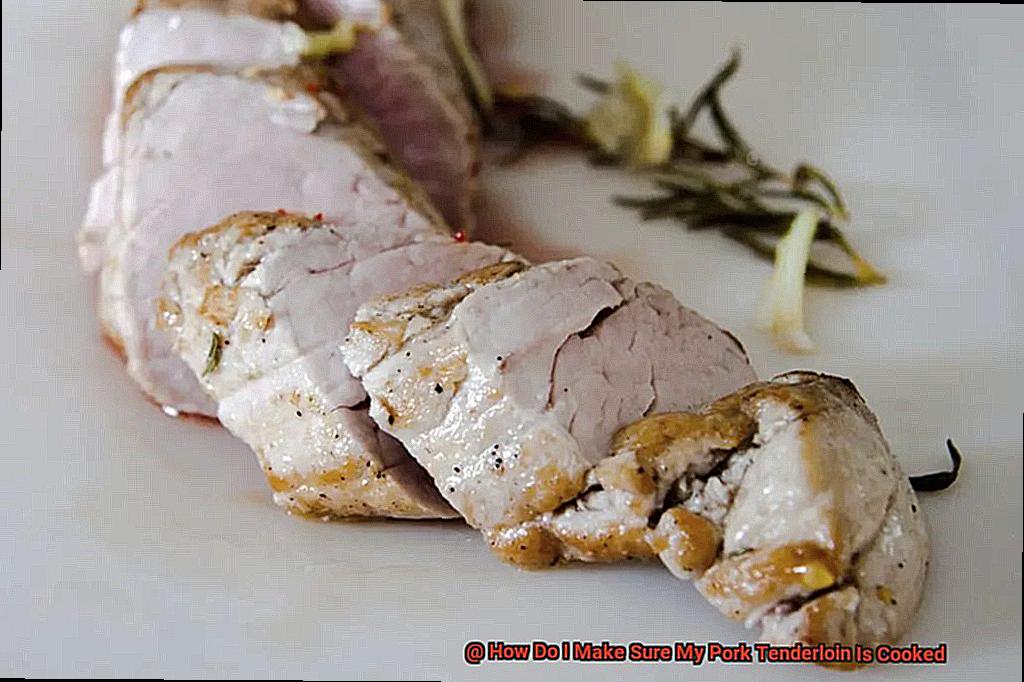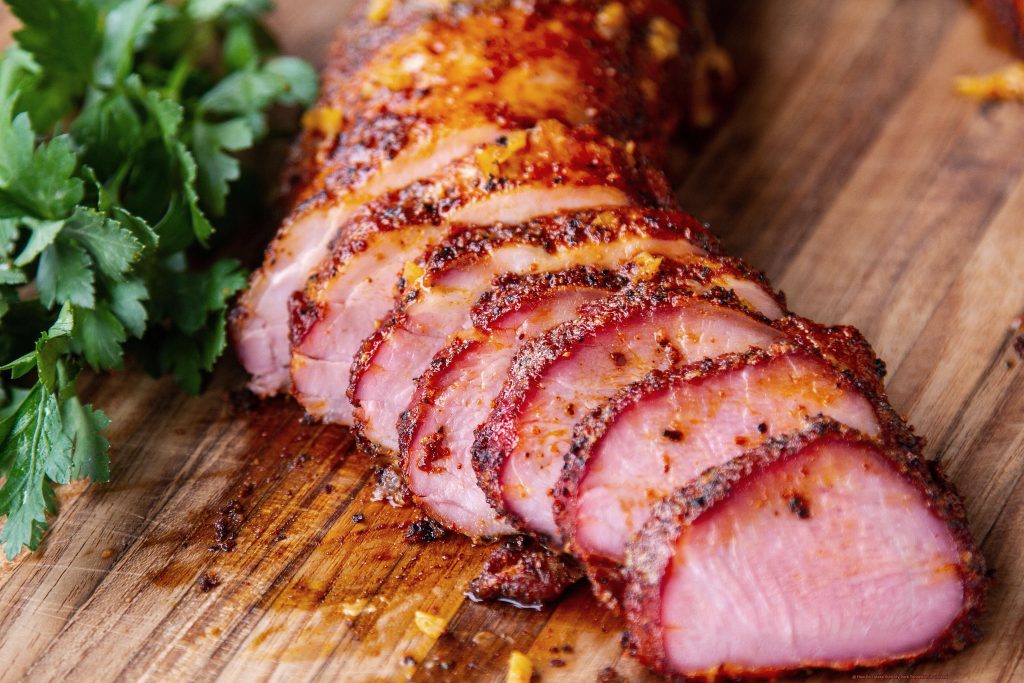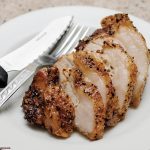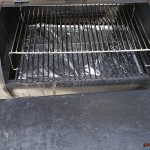Imagine this scenario: you’re throwing a dinner party and you’ve decided to go all out with a succulent pork tenderloin dish. But the last thing you want is to serve up raw meat and have your guests running for the bathroom. Don’t worry, I’m here to help as your ultimate pork tenderloin cooking guru.
Pork tenderloin is a versatile and tasty cut of meat that can be cooked in many ways, from grilling to roasting to sautéing. However, the key to a perfect meal is making sure it’s cooked just right. In this blog post, I’ll be sharing my top tips on how to ensure your pork tenderloin is cooked safely and deliciously.
First things first, let’s talk about temperature. It’s crucial to cook pork tenderloin at the right temperature to avoid any health risks. I’ll show you how to use a meat thermometer like a pro so you can get an accurate reading of the internal temperature of your meat.
Next up, we’ll explore all the different cooking methods for pork tenderloin and how long they take depending on the size of your cut. Whether you’re grilling or roasting, I’ve got you covered with foolproof cooking times.
And finally, we’ll dive into some seasoning and marinating ideas that will elevate your pork tenderloin game to new heights. From sweet and tangy marinades to savory rubs, there are endless possibilities for adding flavor.
So get ready to impress your guests with perfectly cooked pork tenderloin every time. Follow my ultimate guide and become a pro in no time.
Contents
The Importance of Cooking Pork Tenderloin to 145°F
Cooking pork to this specific temperature is not only crucial for food safety but also for achieving the perfect taste and texture.
First and foremost, cooking pork to the recommended temperature ensures that any harmful bacteria present in the meat are destroyed. These bacteria can cause severe illnesses like salmonella or E.coli, which can lead to gastrointestinal issues like diarrhea, nausea, vomiting, and stomach cramps. In some rare cases, undercooked pork can even cause trichinosis, which can result in muscle pain, fever, and swelling around the eyes. Therefore, cooking pork thoroughly to 145°F is essential to avoid any potential health risks.
But that’s not all. Cooking pork tenderloin to 145°F also guarantees that you will have a juicy and tender final product. Overcooking pork can result in a dry and tough texture that is unappetizing. By using a meat thermometer to check the internal temperature of your pork tenderloin, you can prevent overcooking and achieve the perfect level of doneness.
To ensure that your pork tenderloin is cooked perfectly, there are a few things to keep in mind. First, use a meat thermometer to check the internal temperature of the thickest part of the meat. Make sure that the thermometer does not touch any bone or fat as this can give an inaccurate reading. Once the temperature reaches 145°F, remove the pork from the heat source and let it rest for at least three minutes before slicing and serving.
Moreover, cooking times will vary depending on the size and thickness of your pork tenderloin. A general rule of thumb is to cook it for about 20 minutes per pound at 375°F. However, it’s best to use a meat thermometer to ensure that your pork is cooked to the proper temperature and not overcooked.
Additionally, another way to check if your pork tenderloin is cooked correctly is by checking its color. When cooked properly, pork should have a slightly pink color in the center. However, if there is any pink color near the bone or on any other part of the meat, it should be cooked further until it reaches an internal temperature of 145°F.
Using a Meat Thermometer to Check the Internal Temperature
Overcooked or undercooked pork can ruin the flavor and texture of even the best cuts. Luckily, using a meat thermometer can help you achieve the perfect internal temperature every time. As an expert in using a meat thermometer, I’m here to share some tips and tricks on how to use this handy tool to cook delicious and safe pork tenderloin.
To begin, let’s talk about the recommended internal temperature for pork tenderloin. The USDA recommends cooking pork to an internal temperature of 145°F (63°C) with a three-minute rest time before carving. This ensures that any harmful bacteria are destroyed, and the meat is safe to eat. However, getting it to this precise temperature can be tricky.
Using a meat thermometer is the most accurate way to ensure that your pork tenderloin is cooked to the right temperature. Here are some additional tips for using a meat thermometer to check the internal temperature of your pork tenderloin:
- Use an instant-read thermometer: An instant-read thermometer will give you a quick and accurate reading of the internal temperature of your pork tenderloin. Insert it into the thickest part of the meat, making sure not to touch any bones or the pan. Wait for a few seconds until the temperature reading stabilizes.
- Let your pork rest: After cooking your pork tenderloin, let it rest for a few minutes before checking the internal temperature. This will ensure that the juices redistribute throughout the meat, resulting in a more flavorful and juicy final product.
- Clean your meat thermometer: After each use, clean your meat thermometer with hot, soapy water or disinfectant wipes to prevent cross-contamination.
General Cooking Times for Different Sizes and Thicknesses of Pork Tenderloin
Pork tenderloin is a succulent and versatile cut of meat that can add a touch of elegance to any meal, but getting it right can be tricky. That’s why it’s important to know the general cooking times for different sizes and thicknesses of pork tenderloin. This ensures that your pork is cooked to perfection and safe to eat.
A 1-pound pork tenderloin should take about 20-30 minutes at 375°F, but if your tenderloin is thicker or heavier, it may require longer cooking times. As a rule of thumb, add 5-10 minutes for every additional pound of meat.
Let’s break it down even further and examine cooking times based on thickness:
- For a 1-inch thick pork tenderloin, cook for about 20-25 minutes.
- For a 1.5-inch thick pork tenderloin, cook for about 25-30 minutes.
- For a 2-inch thick pork tenderloin, cook for about 30-35 minutes.
However, cooking times alone won’t guarantee a perfectly cooked pork tenderloin. To ensure it’s done just right, use a meat thermometer. The internal temperature of cooked pork should be at least 145°F. Insert the thermometer into the thickest part of the meat, being careful not to touch any bones.
Once your pork is cooked to perfection, give it time to rest for at least three minutes before slicing. Doing so allows the juices to redistribute throughout the meat for a more flavorful and tender final product.
How to Check the Color of the Pork Tenderloin

Cooking pork tenderloin can be a delicate process. It’s important to ensure that it’s cooked all the way through to avoid harmful bacteria and achieve that perfect tenderness. One of the best ways to check if your pork tenderloin is done is by checking its color. Here are some essential tips on how to do it properly:
Know Your Temperatures
To ensure that your pork is safe to eat, it should be cooked to an internal temperature of 145°F. This is when any harmful bacteria present in the meat is destroyed. Use a meat thermometer to check that the temperature has been reached.
Rest Your Meat
After cooking, let your pork tenderloin rest for at least 5 minutes before cutting into it. This allows the juices to redistribute throughout the meat, resulting in a more flavorful and tender final product.
Check the Color
When fully cooked, pork should have a pale pink or white color in the center. However, if there is any pink or red near the bone or on any other part of the meat, it needs more time to cook. Checking the color is an essential step in ensuring your pork is fully cooked.
Use a Meat Thermometer
For accuracy, use a meat thermometer to check if your pork tenderloin has reached its desired internal temperature. Insert the thermometer into the thickest part of the meat, making sure not to touch any bones. The internal temperature should be between 145°F and 160°F for fully cooked pork tenderloin.
Avoid Overcooking
Overcooking pork can result in tough and dry meat. To avoid this, monitor your cooking time carefully and avoid leaving your pork tenderloin on the grill for too long. Find that perfect balance between cooking it enough to ensure its safety and not overcooking it until it becomes inedible.
Tips for Ensuring Proper Cooking Temperature
Cooking pork tenderloin is a delicate process that requires attention to detail. To ensure that your pork tenderloin is cooked perfectly every time, it’s important to follow some essential tips.
Use a Meat Thermometer
A meat thermometer is the most reliable way to check if your pork tenderloin is fully cooked. It allows you to check the internal temperature of the meat accurately. For pork tenderloin, the recommended internal temperature is 145°F (63°C). Make sure to insert the thermometer into the thickest part of the pork and not touching any bones. This will ensure that any harmful bacteria in the meat is destroyed, and it’s safe to eat.
Let It Rest
After cooking your pork tenderloin, don’t rush to slice it right away. Let it rest for at least three minutes before carving it up. This allows the juices to redistribute throughout the meat, resulting in a more flavorful and moist piece of pork.
Don’t Rely on Visual Cues Alone
The color of your pork isn’t always an indicator of whether it’s fully cooked or not. Some cuts of pork may still appear pink even when they are cooked to the proper temperature. Therefore, relying solely on color isn’t a reliable method for determining if your pork is done.
Follow Cooking Times Based on Size and Thickness
Cooking times will vary depending on the size and thickness of your pork tenderloin. A general rule of thumb is to cook it for about 20 minutes per pound at 375°F. However, it’s best to use a meat thermometer to ensure that your pork is cooked to the proper temperature and not overcooked.
Avoid Overcooking
Overcooking can result in a dry and tough texture, so make sure not to leave your pork tenderloin in the oven or on the grill for too long. Once you’ve reached the recommended internal temperature, remove your pork from the heat source and let it rest.
Understanding Doneness Levels in Pork Tenderloin
Don’t worry because understanding the different levels of doneness is the key to achieving your desired outcome.
Cooking pork tenderloin can be tricky. Undercooked meat poses health risks, while overcooked meat can be dry and tough. To ensure you get it just right, let’s explore the different levels of doneness.
- Rare: If you prefer your pork tenderloin rare, aim for an internal temperature of 120°F to 125°F (49°C to 52°C). At this level, the meat will be pinkish-red and dripping with moisture.
- Medium-rare: For those who enjoy a slightly pink center, medium-rare is your go-to. Aim for an internal temperature of 130°F to 135°F (54°C to 57°C). The meat will be succulent, juicy, and just slightly pink in the center.
- Medium: If you want your pork cooked all the way through with just a hint of pink, shoot for an internal temperature of 140°F to 145°F (60°C to 63°C). At this level, the meat will be delectably moist with a slight blush.
- Medium-well: Those who prefer their pork a bit more well-done can aim for an internal temperature of 150°F to 155°F (66°C to 68°C). The meat will be mostly gray with a hint of pink and slightly firm.
- Well-done: Finally, for those who like their pork completely cooked through and without any trace of pink, aim for an internal temperature of 160°F or above (71°C and above). The meat will be firm and dry.
- But wait. Here’s a little secret: the color of the meat isn’t always an accurate indicator of doneness. To ensure your pork is cooked to perfection, use a meat thermometer inserted into the thickest part of the pork tenderloin. This guarantees that it has reached your desired temperature.
Common Mistakes to Avoid When Cooking Pork Tenderloin
There are a few common mistakes that can be avoided to ensure that your dish is perfectly cooked every time.
One of the most common mistakes is overcooking the pork, which can lead to a chewy and unappetizing texture. To avoid this, invest in a meat thermometer to monitor the internal temperature of the pork. Cooking times can vary depending on the thickness of the cut, so it’s important to keep an eye on the temperature for optimal doneness.
Another mistake to avoid is neglecting to season the pork before cooking. Pork tenderloin has a mild flavor and can benefit greatly from a marinade or rub to add moisture and flavor. Take time to plan ahead and marinate your pork overnight or simply season with your favorite herbs and spices before cooking.
Resting the pork after cooking is also crucial. Not allowing the meat to rest can cause dryness as juices will escape if cut too soon. Letting it sit for 5-10 minutes before slicing into it will allow the juices to redistribute throughout the meat, resulting in a more succulent and flavorful dish.
Using high heat when cooking pork tenderloin can cause the outside to burn while leaving the inside undercooked. It’s best to cook pork tenderloin over medium heat and turn it frequently to ensure even cooking.
Lastly, cutting into the pork too soon after cooking can cause all those delicious juices to run out, leaving your meat dry. Be patient and let it rest for a few minutes before slicing into it.
Creative Ways to Serve Cooked Pork Tenderloin
If you’re looking for a way to add some excitement to your meals, cooked pork tenderloin is the answer. This versatile cut of meat can be served in a multitude of creative and delicious ways that will leave your taste buds craving more. Here are five sub-sections with some ideas to inspire you:
Salad Sensation
Looking for something light and refreshing? Try serving sliced pork tenderloin on top of a salad. This is a great option for warmer weather and pairs well with your favorite vinaigrette or other light dressing. The flavors of the pork complement the fresh greens and vegetables perfectly.
Classic Comfort
There’s nothing like a classic dish to satisfy your cravings. Serve cooked pork tenderloin alongside roasted vegetables or mashed potatoes for a comforting meal that’s sure to please. You can mix up the flavor profile by experimenting with different herbs and spices before cooking.
Sandwich Savvy
Who doesn’t love a good sandwich or wrap? Add some excitement to your lunch routine by using cooked pork tenderloin as the star ingredient in your sandwich or wrap. Top it with your favorite toppings and condiments, or even make mini sliders by serving small slices of pork on mini buns with a tasty sauce or topping.
Pasta Perfection
For a truly indulgent meal, incorporate cooked pork tenderloin into a pasta dish. Creamy sauces like alfredo or carbonara work especially well, but you can also experiment with different types of pasta and sauces to find your perfect combination. This is a great way to add some gourmet flair to your dinner routine.
Breakfast Boost
Who says pork tenderloin is just for dinner? Incorporate it into your morning routine by slicing it into breakfast sandwiches or serving it alongside scrambled eggs and toast. With its mild flavor and tender texture, pork tenderloin is the perfect protein to start your day off right.
Conclusion
In conclusion, ensuring that your pork tenderloin is cooked to perfection requires attention to detail and a few key steps.
First, use a meat thermometer to check the internal temperature of the pork. The USDA recommends cooking pork to an internal temperature of 145°F.
Second, let the pork rest for at least three minutes before slicing it. This allows the juices to redistribute throughout the meat, resulting in a juicy and flavorful dish.
Finally, consider marinating or seasoning your pork tenderloin beforehand to add extra flavor and moisture.






